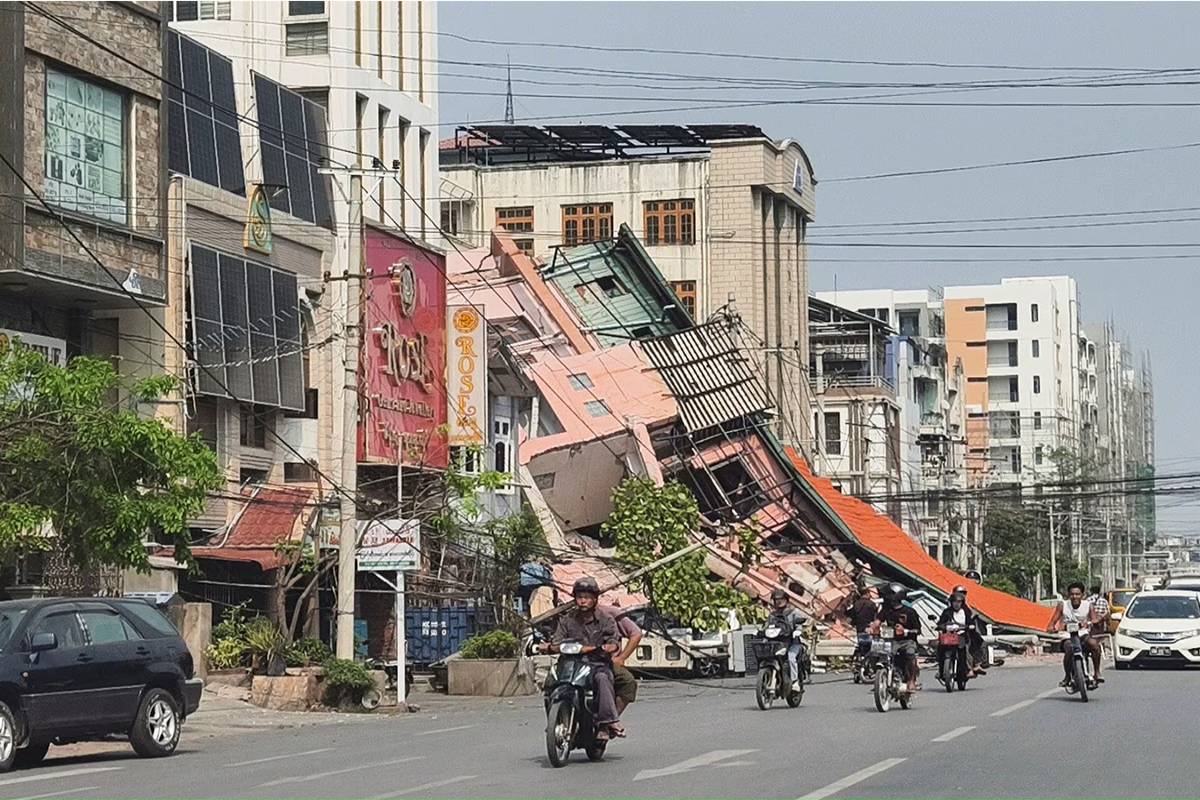The death toll from the powerful 7.7 magnitude earthquake that struck central Myanmar on Friday has surpassed 1,600, with fears that the number could climb significantly higher, The New York Times reported.
Rescue teams are racing against time to locate survivors trapped under the debris of collapsed buildings, monasteries, and mosques in and around Mandalay, Myanmar’s second-largest city. However, ongoing power outages and damaged infrastructure have made operations extremely challenging.
The US Geological Survey has warned that the final toll could exceed 10,000 as recovery efforts continue. Meanwhile, Myanmar’s military regime has imposed strict control over information, further complicating relief efforts.
The earthquake has intensified Myanmar’s existing humanitarian crisis, with nearly 20 million people already struggling with food and shelter shortages due to the ongoing civil war following the 2021 military coup.
Despite the national emergency, Myanmar’s military launched airstrikes on Naung Lin, a rebel-held village in northern Shan State, on Friday evening, shocking citizens already grappling with disaster.
In response, the National Unity Government (NUG)—a shadow opposition group—announced a two-week suspension of offensive military operations in the affected areas while maintaining the right to self-defense.
Public outrage is mounting against Myanmar’s military rulers, as reports emerge of soldiers and police arriving at disaster sites but failing to assist in relief operations. Volunteers working in the wreckage voiced their frustration, stating:
“We don’t need guns; we need helping hands and kind hearts.”
The Myanmar junta has declared a state of emergency in six regions, including rebel-held territories, and has made an urgent appeal for international assistance. However, aid efforts are hindered by:
- Collapsed infrastructure
- Divided and conflict-ridden territories
- International sanctions restricting fund transfers
Despite the challenges, global aid organizations are beginning to mobilize, working through complex logistical barriers to deliver much-needed relief.
As Myanmar struggles to recover from one of its deadliest natural disasters, the earthquake has further exposed the deep political and humanitarian crisis facing the nation.





